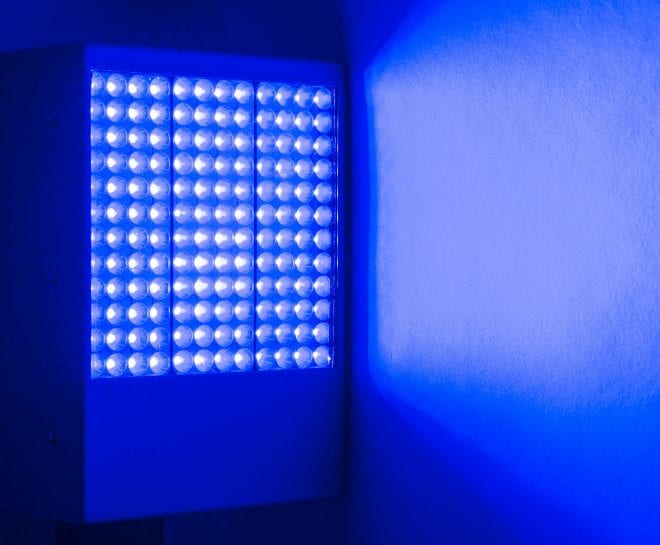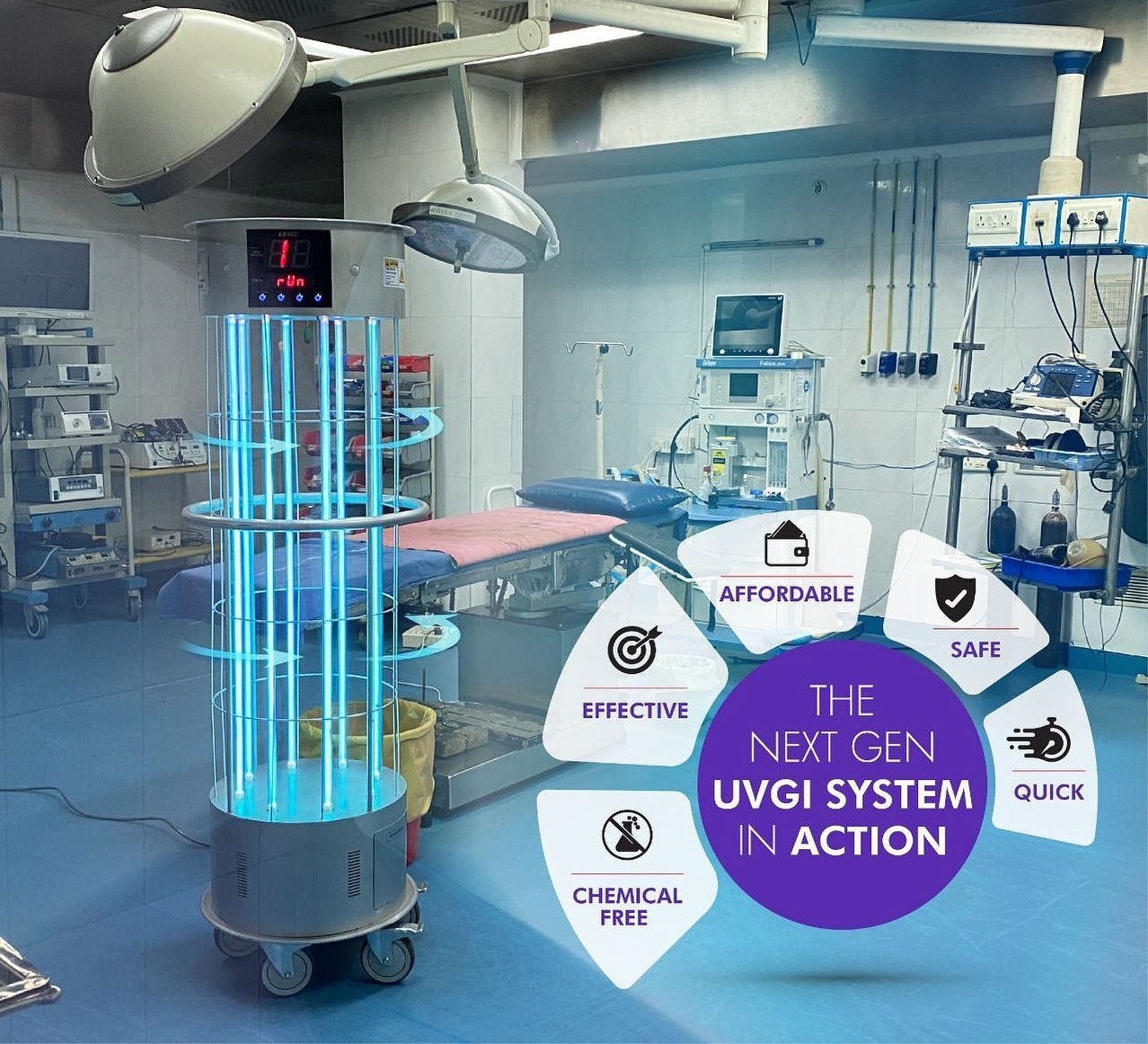Far-UVC Technology Unleashed: Transforming UV Sanitizers for Optimum Efficiency
Far-UVC Technology Unleashed: Transforming UV Sanitizers for Optimum Efficiency
Blog Article
Much UVC Light: A Game-Changer in the Fight Against Airborne Pathogens
In the ever-evolving fight versus airborne microorganisms, the introduction of much UVC light has triggered substantial rate of interest and capacity. This cutting-edge technology, harnessing a particular series of ultraviolet light, holds the promise of changing just how we deal with the spread of unsafe microorganisms in numerous settings. Its potential applications and unique residential properties have garnered focus from researchers, scientists, and public health and wellness professionals alike. What precisely is much UVC light, and how does it work? In this conversation, we will explore the scientific research behind this game-changing innovation, discover its benefits, and analyze its future implications in the continuous fight against airborne virus.
The Scientific Research Behind Far UVC Light
The clinical concepts underlying using Much UVC light as a potential option for combating airborne pathogens are both intricate and appealing. Much UVC light refers to a certain array of ultraviolet (UV) light wavelengths, usually between 207 and 222 nanometers, which have been located to effectively eliminate or inactivate microbes such as infections and germs. Unlike traditional UVC light, which has a shorter wavelength and is recognized for its germicidal residential properties but can also harm human skin and eyes, Far UVC light has actually been revealed to be risk-free for human exposure.
The key device behind the performance of Far UVC light hinge on its capability to penetrate and destroy the genetic material of microorganisms, including their DNA and RNA. When exposed to Far UVC light, the hereditary material goes through a procedure called photodimerization, where adjacent bases in the DNA or RNA particle bind with each other, avoiding duplication and making the microorganism unable to create or recreate infection.

Exactly How Much UVC Light Functions
Much UVC light operates by utilizing details ultraviolet wavelengths to successfully neutralize microorganisms and prevent their replication, making it an encouraging service for combating air-borne virus. Unlike traditional UVC light, which is damaging to human skin and eyes, far UVC light has shorter wavelengths, generally in the variety of 207 to 222 nanometers (nm), that do not permeate the outer layer of the skin or the tear layer of the eye. This makes it secure for continuous human direct exposure, while still being dangerous to bacteria and infections.
The performance of far UVC light depend on its ability to destroy the dna and pass through and RNA of microbes. When revealed to much UVC light, the hereditary product of these virus is damaged, rendering them unable to duplicate and contaminate cells. In addition, researches have shown that far UVC light can properly inactivate air-borne infections, such as influenza, measles, and coronaviruses, including SARS-CoV-2, the virus responsible for COVID-19.
In addition, much UVC light is likewise with the ability of sanitizing surface areas and objects in an encased space. By mounting much UVC lights or utilizing portable much UVC light gadgets, it is possible to continuously decontaminate the air and surface areas, minimizing the risk of air-borne transmission of pathogens.
Benefits of Far UVC Light
Using much UVC light deals a series of substantial benefits in combating airborne microorganisms and making certain a more secure environment for continual human exposure. Among the vital benefits of much UVC light is its capacity to effectively reduce the effects of various kinds of harmful germs, infections, and fungis without causing injury to people. Unlike conventional UV light, which can be hazardous to human skin and eyes, much UVC light has a shorter wavelength that permits it to target and damage microorganisms while posing marginal danger this content to human wellness.

In addition, much UVC light is much more secure for the environment contrasted to standard sanitation techniques. Chemical disinfectants frequently have harmful components that can have unfavorable effect on the setting. Far UVC light, on the other hand, does not produce any type of damaging byproducts or residues, making it a much more environment-friendly and lasting service.
Applications of Far UVC Light
One of the vital usages for much UVC light is in the field of air filtration and sanitation. Much UVC light has proven to be effective in eliminating airborne microorganisms such as fungis, viruses, and bacteria. This technology functions by producing a certain wavelength of light that can passing through the outer layers of bacteria and damaging their DNA, rendering them unable and non-active to replicate. Unlike conventional UV light, much UVC light is secure for human direct exposure, making it suitable for continuous usage in public areas such as schools, workplaces, and hospitals.
One more application of much UVC light remains in the health care industry. It can be utilized to disinfect healthcare facility spaces, operating theaters, and clinical devices, lowering the threat of healthcare-associated infections. In addition, much UVC light can be incorporated right into heating and cooling systems to cleanse the air distributing in structures, offering an included layer of protection versus air-borne virus.
Additionally, much UVC light can be made use of in the food sector to stop foodborne health problems. It can be used to sanitize food handling facilities, eliminating microorganisms and various other bacteria that may pollute food.
Future Implications of Far UVC Light
The prospective future applications of much UVC light are large and hold guarantee for various sectors and fields. Health centers and i was reading this centers could make use of much UVC light to sanitize client spaces, running cinemas, and waiting locations, reducing the risk of healthcare-associated infections.
Moreover, using far UVC light in public rooms such as airports, train terminals, and mall can assist manage the spread of airborne microorganisms. By continually disinfecting these areas, the threat of transmission can be significantly decreased, offering a safer atmosphere for individuals.
Another potential application of far UVC light is in the food industry. Far UVC light might be utilized to disinfect cooking surface areas, packaging materials, and storage space areas. This can assist protect against the contamination of food and minimize the event of foodborne ailments.
Furthermore, far UVC light can be made use of in heating and cooling systems to decontaminate the air flowing in buildings. This might be particularly helpful in crowded rooms such as workplaces, cinemas, and colleges, where the danger of airborne transmission is higher.
Final Thought
To conclude, far UVC light has emerged as a game-changer in the battle against air-borne virus. Its unique properties and ability to securely eliminate infections and bacteria make it an encouraging service for numerous applications. From public rooms to healthcare setups, far UVC light offers various benefits in reducing visit this website the transmission of diseases. With additional research study and advancement, its extensive application might have considerable ramifications for the future of infection control.
Far UVC light refers to a specific range of ultraviolet (UV) light wavelengths, usually between 207 and 222 nanometers, which have actually been found to successfully kill or inactivate bacteria such as infections and bacteria. far-uvc. Unlike traditional UVC light, which has a much shorter wavelength and is recognized for its germicidal homes however can also damage human skin and eyes, Far UVC light has actually been revealed to be risk-free for human direct exposure
Unlike conventional UVC light, which is harmful to human skin and eyes, much UVC light has shorter wavelengths, commonly in the variety of 207 to 222 nanometers (nm), that do not permeate the external layer of the skin or the tear layer of the eye. Unlike standard UV light, which can be damaging to human skin and eyes, far UVC light has a shorter wavelength that permits it to target and damage virus while posing minimal risk to human health and wellness.
Unlike traditional UV light, far UVC light is secure for human direct exposure, making it appropriate for continual use in public rooms such as offices, health centers, and colleges.
Report this page